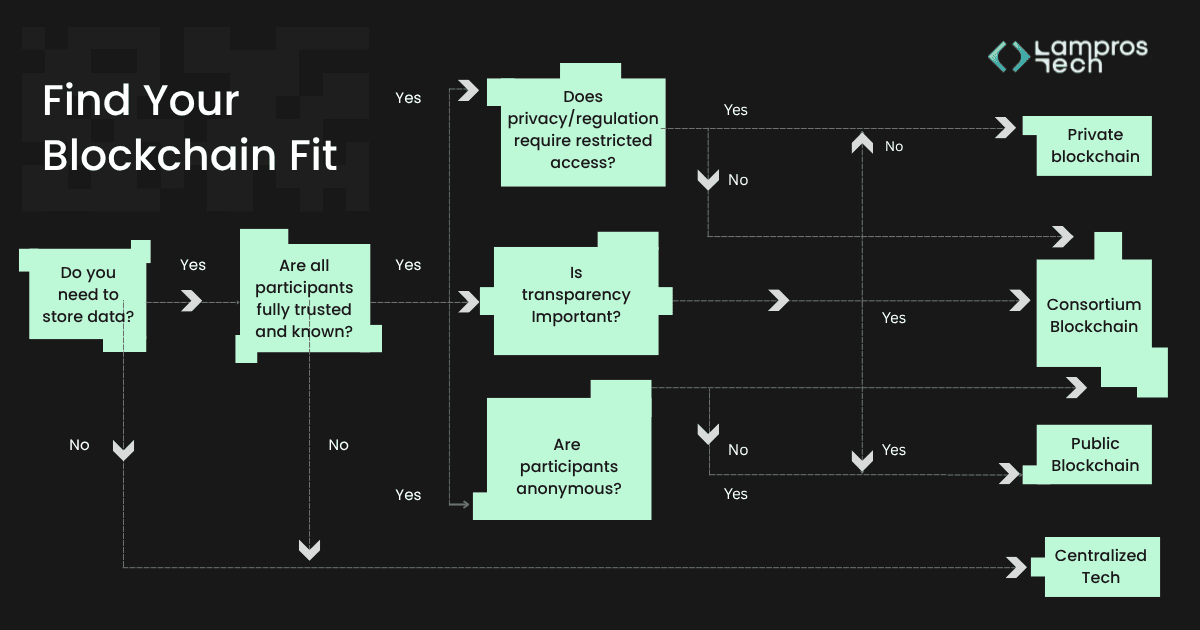Contact Us
If you're working on something real — let's talk.
Development & Integration
Blockchain Infrastructure & Tools
Ecosystem Growth & Support
© 2025 Lampros Tech. All Rights Reserved.
Published On Jun 17, 2025
Updated On Jul 14, 2025

Pros | Cons |
|---|---|
Trustless and censorship-resistant | Regulatory and compliance challenges |
Fully transparent and auditable | Limited privacy since data is public |
High security via distributed consensus | Not ideal for sensitive or internal business data |
Pros | Cons |
|---|---|
High throughput and performance | Limited decentralization which requires trust in the operator |
Controlled privacy and access | Lower resilience due to central control |
Easier to comply with regulatory requirements | Interoperability challenges with public systems |
Pros | Cons |
|---|---|
Shared control builds trust across parties | Requires coordination among stakeholders |
Better performance than public chains | Not fully open or permissionless |
Tailored governance structures | Setup and governance can be complex |


Growth Lead
FAQs

You need blockchain if your operations involve multiple parties, require high trust, or need tamper-proof data. If you're solving transparency or coordination problems, it's worth exploring.

Public blockchains are open to all, private blockchains are controlled by one organization, and consortium blockchains are shared among a few trusted entities. Each fits different use cases.

UPS used blockchain for logistics transparency, while OriginTrail enables secure supply chain tracking. Both show how blockchain improves coordination and data integrity without replacing legacy systems.

Blockchain creates tamper-proof, timestamped records that boost trust and auditability. It ensures data consistency across systems and is perfect for regulated industries and traceability use cases.

Decentralization reduces single points of failure, strengthens security, and empowers stakeholder-driven governance. It supports scalable, future-ready systems for businesses aiming to stay ahead.